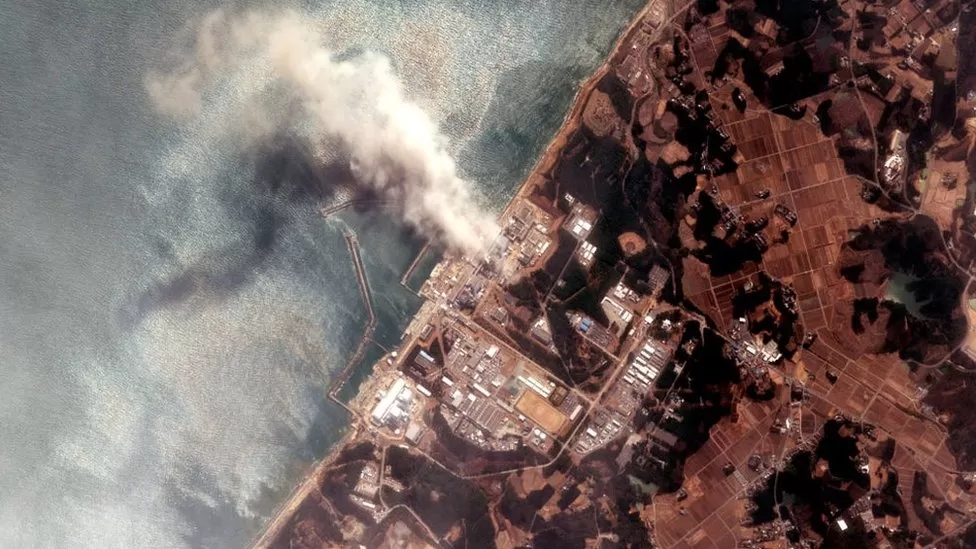We all remember the year 2011 as the year that ravaged the island nation of Japan. The country was struck by a 9.1 magnitude earthquake, quickly followed by a devastating tsunami and several aftershocks. The disaster is estimated to have cost Japan around $360 billion making it the costliest natural disaster in human history. To make the already fragile matter worse, on 11th March 2011, the Fukushima Power Plant went off, bringing back the memories of the Chernobyl accident. Fortunately, the severity of the accident was nothing compared to the Pryp’yat’ plant.

This incident provoked a huge anti-nuclear campaign primarily led by Japan which once boasted 50 nuclear power plants, decommissioned 21, and has only 10 up and running. Japan was joined by many more countries that shied away from nuclear energy.

The Looming Challenge
But today, we are faced with a serious energy crisis. With the ongoing Russia-Ukraine war, lots of countries are refraining from using Russian Oil and Gas. In 2019, the world used a whopping 23.9k TWh of energy which is projected to grow to 53k TWh by 2050. This comes at a great cost of emissions. Our annual emissions stood at around 36.7 billion metric tons. Out projected electricity consumption is times the 2019 levels. If we multiply the same factor by our emissions, it would result in a whopping 81.4 billion metric tons of CO2 emission per year.

Experts warn us to limit the average global temperature rise to 1.5 degrees. This means limiting all the future new emissions from 2018 onwards to 570 billion gigatons. This puts tremendous pressure on renewables. Unless we want to flood the world with solar panels which have limitations of their own, our electricity must come from other clean sources as well.
Exploring Possibilities
Welcome the nuclear energy, we know nuclear energy can be derived from both fusion and fission. But we’re essentially talking about fission energy as we’re years away from commercially harnessing the fusion energy that once viable would grant us a potentially unlimited amount of energy. The world is refocusing on fission energy. And guess who’s leading this foray into this sector of clean energy? It’s our very own Japan. To reduce its dependence on fossil fuels and achieve the target of carbon neutrality by the year 2050, Japan is deriving ways to divert the heat produced by the reactor to the heating systems. So if successful, nuclear plants will not only produce for us the clean energy that we desperately need, but will also produce other important synthetic chemicals, provide to our heating systems and produce pink hydrogen!
The Hydrogen Spectrum
Now you must be wondering what on earth is pink hydrogen. After all, hydrogen is a colorless gas. Well, the color associated with it comes from the process used to derive hydrogen. The spectrum majorly includes-
- Green Hydrogen- Produced with no harmful greenhouse gas emission, made using surplus green energy like solar and wind to electrolyze water. Currently, it makes up a small percentage of the overall hydrogen produced because the production process is expensive.
- Blue Hydrogen- Produced mainly from natural gas using a process called steam reforming. It is sometimes called ‘low carbon hydrogen’ as it doesn’t actually avoid the creation of greenhouse gases.
- Grey Hydrogen- Most common hydrogen production. Created from natural gas using steam methane process without capturing the greenhouse gases created.
- Black Hydrogen- Makes use of coal or lignite in the hydrogen-making process. It is the opposite of green hydrogen in the hydrogen spectrum and is environmentally damaging.
- Pink Hydrogen- Then we have the hydrogen-producing through electrolysis powered by nuclear.

What The Future Holds
Does this make the matter juicier which made other countries hop the wagon as well? But is it feasible to achieve all this by the year 2050? Here’s a graph showing the average time taken by countries to build a nuclear plant.

We have countries like the US and Argentina which take up to 20 years to build a nuclear plant on the other end of the spectrum, we have countries like Japan and South Korea which build a nuclear power plant in about 5-6 years. It is not just Japan with the nuclear fever, we have countries like China, South Korea, United Arab Emirates, Poland, and Ukraine among others, all headed in the same direction.
Final Thoughts
Even though nuclear power plants are expensive to build and maintain, producing toxic by-products that are radiative in nature and have to be stored for thousands of years safely. We cannot deny the advantages that this form of energy brings with it. It is a gamble that we have to take. The times are dire which call for bold measures to avoid total catastrophe in the form of climate change that is no longer just looming around the corner but has come to knock on our doors with a thud. We as a human race have to stand against this common problem together and solve the problem together. Be it in the form of aid to the developing nations to help them build their infrastructure centering the sustainable ideas or coming together to share our understanding and the knowledge of critical problems that hold the key to solving several of our challenges like the battery systems, fusions energy, and the improved mobility and transmission system because together we can.

